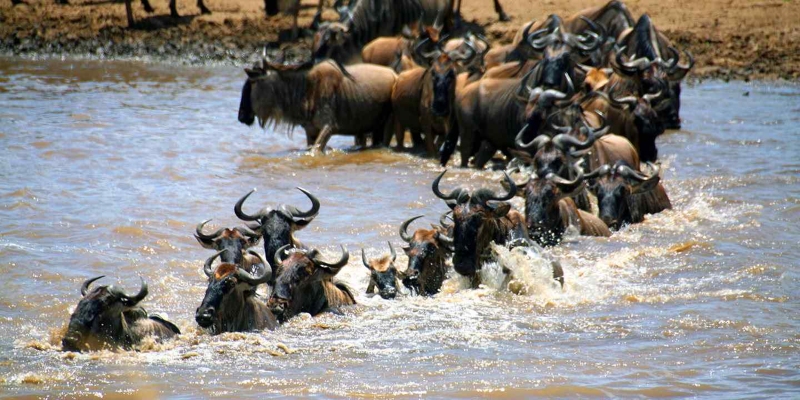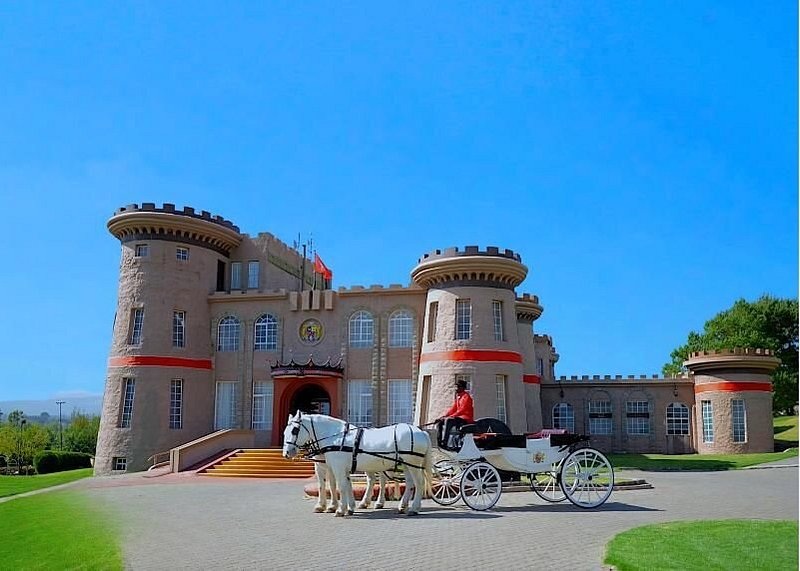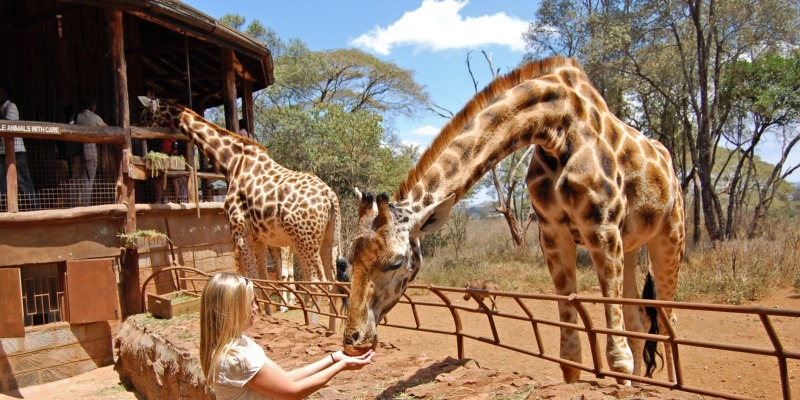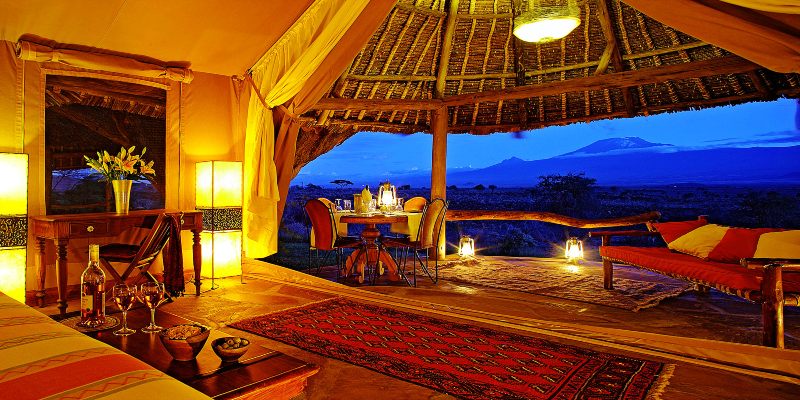The Wildebeest Migration from Kenya’s Maasai Mara to Tanzania’s Serengeti and back is one of the most spectacular natural events in the World.
Every year, tourists flock in these National Parks just to get a glimpse of the resilience and vulnerability of these animals as they cross the Mara River.
Having witnessed the Great Wildebeest Migration several times, I would say touring the Maasai Mara and Serengeti should be at the top of your bucket list.
Witnessing the raw power of nature and natural drama as the crocodiles attack some of the Wildebeests crossing the Mara River is one of the best ways to spend your holidays or summer.
Wildebeest Migration Facts
Here is a compilation of 5 amazing Wildebeest Migration facts that you should know.
- The Wildebeest Migration does not involve Wildbeests only. It also involves other animals such as the Zebras, Buffaloes, Grant Gazelles, Thompson Gazelles, Elands, Topi and some carnivores including Lions and Cheetahs who like to prey and ambush young and vulnerable herbivores during the calving season.
- The Wildebeest Migration involves the migration of more than 1.2 million Wildeebests and about 300,000 other herbivores.
- The Mara River crossing is the most documented natural animal event in the entire World. At the moment, it is regarded as one of the 7 wonders of the World. The crossing is very dangerous because the river is infested with crocodiles.
- The calving season in the Southern Serengeti is very impressive. More than 500,000 calves are born during this duration.
- The total distance covered during the Wildebeest migration is between 1,600 to 2,400 Kilometres depending on the availability of pasture and water
When is the Wildebeest Migration?
Before booking for a safari, it is important to find out when the Great Wildebeest Migration occurs to avoid dissapointments.
The Masai Mara Migration can be divided into 2 seasons. The first phase is when the Wildebeests are migrating from Tanzania to Kenya while the second phase is from Kenya to Tanzania.
Season 1
Based on our decades and decades of experience, the first season of the Wildebeest Migration starts from mid July till late September.
Before the migration starts, large herds of Wildebeest normally gather on the northern side of Serengeti as they near the Mara River. By this time, tourists are already flocking on the Southern side of Maasai Mara waiting for the migration to begin.
Season 2
The second season of the Wildebeest migration occurs around late October and early November when the rains return to the Southern Serengeti.
By December, most of the herds are in the Southern Serengeti and Ngorongoro crater where they calve until the month of March. (In case you are in the mood to see young Wildebeests, the best time is between January and March)
Later on, these herds will start migrating towards the Northern part of the Serengeti when the rains start to fail from the month of April. After gathering in large herds in the Northern side of Serengeti, they begin their migration into the Maasai Mara and the cycle continues. Amazing, right?
Wildbeest Migration: Month by Month
Asides from the two seasons discussed above, the Wildebeest Migration can be broken down into months as follows.
October to November
From October to November, the Wildebeests are migrating back to Tanzania. They are in the Western side and are moving towards the Southern part of Serengeti where there are green shoots and fresh leaves for them to consume.
The main areas where they can be found are Mbuze, Seronera Valley Lobo, and Mawe. While in these areas, calving begins, and predators can also be seen in plenty. The WIldebeests finally arrive in the Southern part of Serengeti by December.
December to April
The Wildbeests remain in the Southern part of Serengeti till April. They can be found in between the plains of Ngorongoro and Ndutu. By February, the calving season is at its peak and the wildebeest populations grows exponentially.
According to statistics by the Tanzanian Wildlife Management Authority, more than 8,000 calves are born daily. By the end of the calving season, more than 500,000 calves have been given birth. By end of March latest early April, the herds have started migrating Northwards. Most of the herds can be found in the Central and Western part of the Serengeti.
May to June
June marks the end of the rainy season and most herds are in the Northern part of the Serengeti. There is not enough pasture and water for them to feed in the Central and Southern parts.
July to September
July to September is the most spectacular moment to witness the Wildebeest migration. While in the Northern part of Serengeti, the herds start to divide themselves into smaller groups and attempt to cross the Mara. After crossing, the herds move to the Southern parts of Maasai Mara. They remain on that part until October when they begin the migration back.
What is the Best Month to see the Great Migration in Tanzania?
The best month to witness the Wildbeest migration is during the month of August. During this time, migration is at its peak and thousands of thousands of Wildebeests are crossing the Mara River at different points.
Point to Note: The Wildebeest Migration also involves the migration of other herbivores in search of pasture and water such as the Zebras and Gazelles.
Where is the Best Place to see the Migration in Tanzania?
The best place to see the Wildebeest Migration in Tanzania is in the Northern Serengeti along the Mara River during the peak months of July to early September. However, you should be careful how you carry yourself while at this spots because there are dominant prides of Lions, Cheetahs and Leopards closeby waiting for a hunt.
Where is the Best Place to See the Migration in Kenya?
The best place to see the Wildebeest Migration in Kenya is in the Southern part of the Maasai Mara along the Mara River during the peak months of July to early September.
Wildebeest Migration Packages
Are you interested in witnessing the Great Wildebeest Migration? Would you like to visit Kenya and witness this spectacular natural event. In case so, Zunguka Safaris has got you covered.
Our Wildebeest Migration Packages are affordable and offer a variety of Safari activities including game drives, walking safaris, and hot air ballon air safaris. Our prime timing ensures you will not miss any action of the Great Wildebeest Migration.
Above all, our guides are experienced and knowledgeable. They can explain the behavior of these animals as well as their patterns of migration.
For bookings, you can Contact Us directly for unbeatable Wildebeest Migration Packages.
Below is a table showing our rates/charges. Happy Safari!
| Group Size (People) | Cost per Person from (USD) |
| 2 Pax | $6,600 |
| 4 Pax | $5,500 |
| 6 Pax | $4,700 |
| 8 Pax | $4,400 |
Point to Note: We also make customized Wildebeest Migration Packages. There is something, for everyone!
Wildebeest Migration Itinerary
This is an 8 days Itinerary organized by Zunguka Safaris. Happy Safari!
Day 1: Arrival in Nairobi
Arrival at Nairobi’s Jomo Kenyatta International Airport. Transfer for your stay at a hotel in Nairobi, with an optional evening to explore the city or relax after the flight.
Highlight: Meet your guide, safari briefing, and enjoy a delicious local dinner.
Overnight at Tamarind Tree Hotel/ alternative hotel.
Day 2: Fly from Nairobi to Maasai Mara
Transfer to Wilson Airport for morning flight from Nairobi to Masai Mara National Reserve.
Check in the lodge or camp of choice, after lunch head out for an afternoon game drive in the Masai Mara.
Highlights: Introduction to Kenya’s wildlife and the vast savannah. Spot resident lions, elephants, and various antelope species.
Overnight at Ashnil Mara Camp or Mara Simba Lodge/ alternative hotel.
Days 3 & 4: Masai Mara Game Drives
Full-day game drives to explore the rich diversity of the Mara’s wildlife.
Highlights: Large cat sightings, and potentially spot the “Big Five” (lion, leopard, buffalo, rhino, elephant).
Cultural Experience: Optional visit to a Masai village to learn about the Masai people and their culture.
Overnight at Ashnil Mara Camp or Mara Simba Lodge/ alternative hotel
Day 5: Transfer to Serengeti National Park
Cross the Kenya-Tanzania border at Isebania and proceed to the Serengeti National Park.
After check in and lunch, head out for an evening game drive in the northern Serengeti to start exploring the region.
Highlights: First taste of the Serengeti’s vast landscapes, with chances to see the wildebeest migration moving south.
Overnight at Mbugani Tented Camp or Tanzania Bush Camps/alternative hotel
Days 6 & 7: Northern & Central Serengeti Game Drives
Full-day game drives to explore migration hotspots and see predators and other wildlife.
Highlights: Witness dramatic river crossings along the Mara River, explore predator territories, and experience the incredible biodiversity.
Overnight at Mbugani Tented Camp or Tanzania Bush Camps/alternative hotels
Day 8: Serengeti to Arusha Departure
After breakfast, check out of the hotel and have a morning game drive en route to the Seronera Airstrip for a flight back to Arusha.
Activities: Brief shopping or sightseeing in Arusha (if time allows) before heading to Kilimanjaro International Airport for your return flight.
END OF SAFARI
Cost Inclusions
- Accommodation in lodges and luxury tented camps (mid-range to high-end options).
- Meals on full board throughout the safari.
- Transportation in 4×4 safari vehicle with a pop-up roof for game viewing and photography.
- Internal flights (Nairobi to Masai Mara, Serengeti to Arusha).
- Park Entry fees for Masai Mara and Serengeti National Parks.
- Guide Services by professional, knowledgeable driver-guides for game drives.
- Assistance with border crossings and documentation.
- Bottled water provided during game drives.
Cost Exclusions
- International Flights: To/from Nairobi or Kilimanjaro International Airport.
- Visa Fees: For Kenya and Tanzania.
- Travel Insurance: Highly recommended but generally excluded.
- Tips: For guides, drivers, and staff.
- Optional Activities: Such as hot air balloon safaris in Masai Mara or Serengeti, Masai village visits, or additional excursions.




